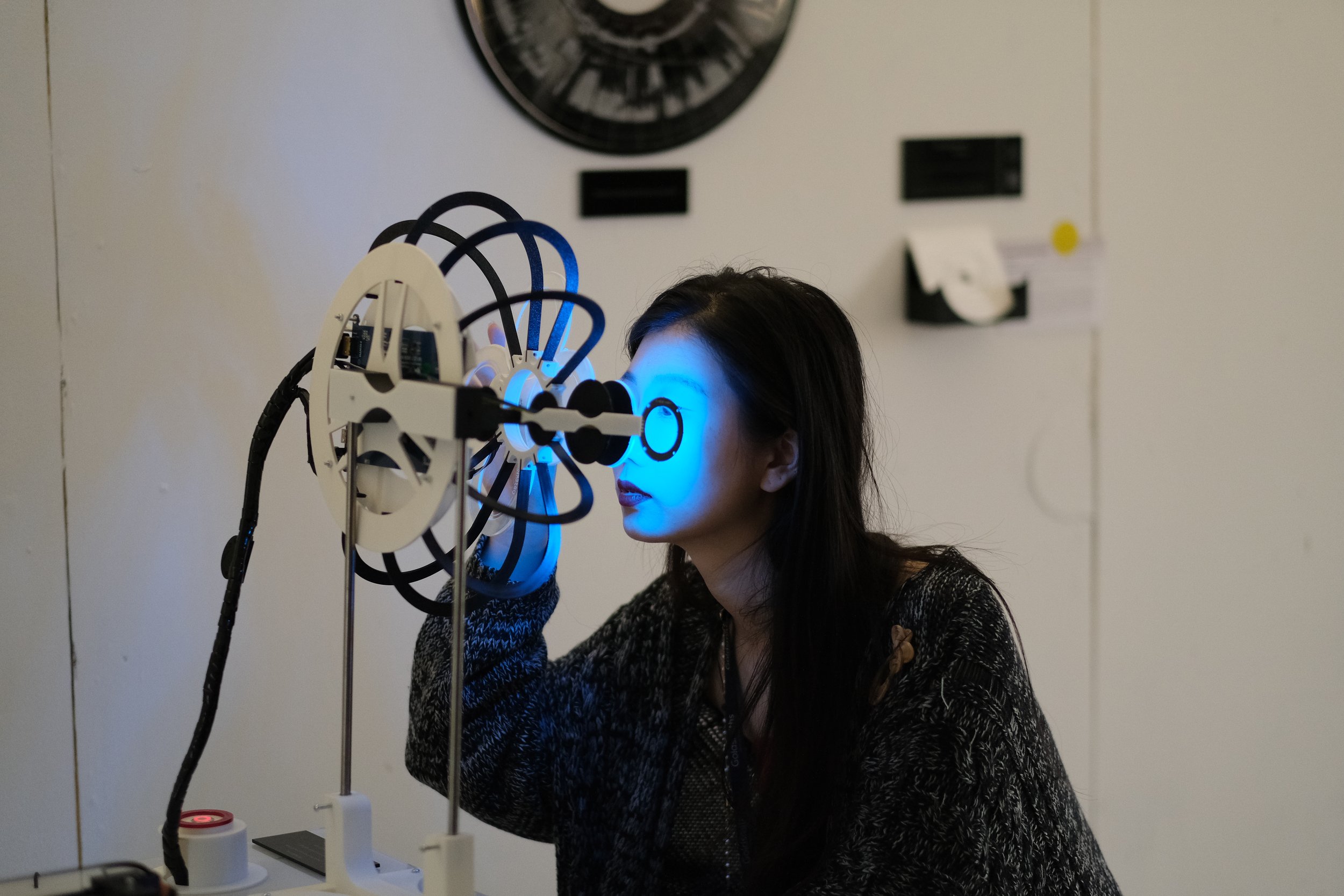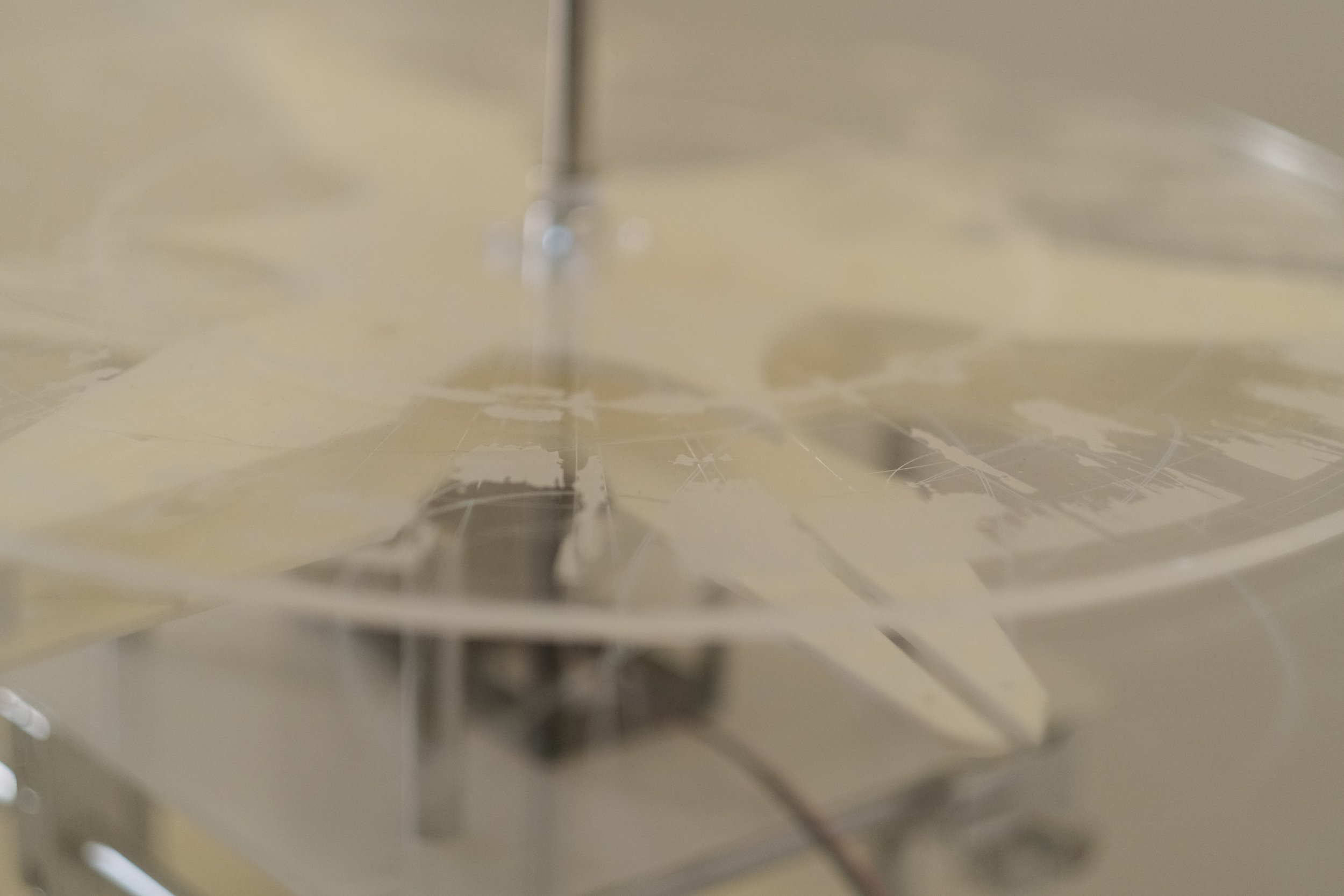Space Manifesto 2024
Earth is no longer save-able because of the human activities. Humanity is a lie. All natural species are in danger and the Earth is collapsing.
Manifesto: I consent to provide my personal data to save the Earth.
This installation is proposed to send distress signals to outer space, together with recorded human iris biometrical data.
The installation can be divided into three phases. First input is the microscope device. The microscope device invites people to observe inside, it will record participant’s left eye’s iris pattern while the participant’s right eye is watching a collection of videos through a small screen. Videos contain persuasive contents to convince the audience of providing their personal biometrical data in order to save the earth.
Once the participant agrees to give consent, they will need to press a button to activate the machine. The programme takes the iris pattern and sends it to the drawing machine to carve on an acrylic disk. The acrylic disk is in a circular shape with basic information of the Earth and the Solar system. All the participants’ iris patterns will be encoded and carved on the same disk as a collective record. The participant is able to see the carving process from the second phase of the installation in real-time.
At the same time, the third phase of the device will be activated, sending the encoded message following the movement of the drawing machine through corner cube prisms pointed upright. The sender will be working as a laser ranging receiver. Whoever point the laser beam to the device will detect our current the location in the Universe.
The disk that contains human biometric data will be sent to the Space in a rocket or satellite. The disk is a form of petition while the iris patterns are signatures that proves the existence of humanity.






The project was initiated by the idea of making Space the audience. Human has ongoing curiosity to explore the Space as well as seek for other non-human form of intelligence.
This is a reference to the SETlI: 1679-BIT Arecibo message [1], the interstellar radio message that demonstrates human technology achievement. It encoded basic information of the Earth, including such as binary math, biological data, technology, images of the communicating telescope, then broadcasted to the Space via radio wave, hoping to hear some response. Therefore, the project’s concept is developed under the canopy of communication, involves message recording, conversion, encoding, delivering, understanding and miss-understanding.
The main tone of the project is overall negative, passing on disappointment about humanity. According to Stephen Hawking’s prediction in 2017, humanity can only survive on Earth for the next century because of climate change, population growth, civil wars and Artificial Intelligence. Mankind needs to find other planets to invade before the Earth is destroyed [2]. IUCN Red List of Threatened Species [3] identified more than 45,300 species on Earth are threatened with extinction. Humans will inevitably destroy the Earth, as they cannot save the world from perishing.
The project takes the form of vinyl recorder, using a tungsten pen to permanently carve encoded iris pattern to an acrylic disc. The project is a reference to the Voyager project by NASA [4], in which two golden records containing human information are carried by two spacecrafts and floating in the Space. If any of the Voyager’s information is captured by other Space intelligence, they will be able to decode and understand the message in a bottle and the human biometric data from this project.
References
[1] SETI Institute, “Arecibo Message | SETI Institute,” Seti.org, 2019. https://www.seti.org/seti-institute/project/details/arecibo-message
[2] P. Rincon, “Stephen Hawking’s warnings: What he predicted for the future,” BBC News, https://www.bbc.co.uk/news/science-environment-43408961 (accessed Sep. 7, 2024).
[3] IUCN, “The IUCN Red List of Threatened Species,” IUCN Red List of Threatened Species, 2024. https://www.iucnredlist.org/
[4] “Voyager - NASA Science,” science.nasa.gov. https://science.nasa.gov/mission/voyager/
Photo: Stathis Doganis
Participant: Fanyi Qu
Narrative Documentation
AI text-to-sound narrative in Chinese (with English translation)
黑洞在跳舞 (Black holes are dancing)
太空深处回响呼唤 (Calls echoing from the depths of space)
求救信号变成漂浮的宇宙垃圾 (SOS messages become floating cosmic garbage)
灰烬变成流星 (Ashes become meteors)
电波是地球连着银河的脐带 (Radio waves are the umbilical cord connecting the Earth to the Milky Way)
地球是宇宙分娩时留下的眼泪 (The Earth is the tear left by the universe during childbirth)
眼泪会蒸发 (Tears will evaporate)
痛苦也会过去 (Pain will also pass)



